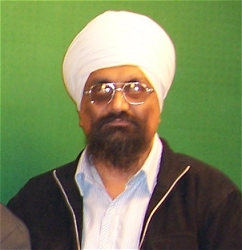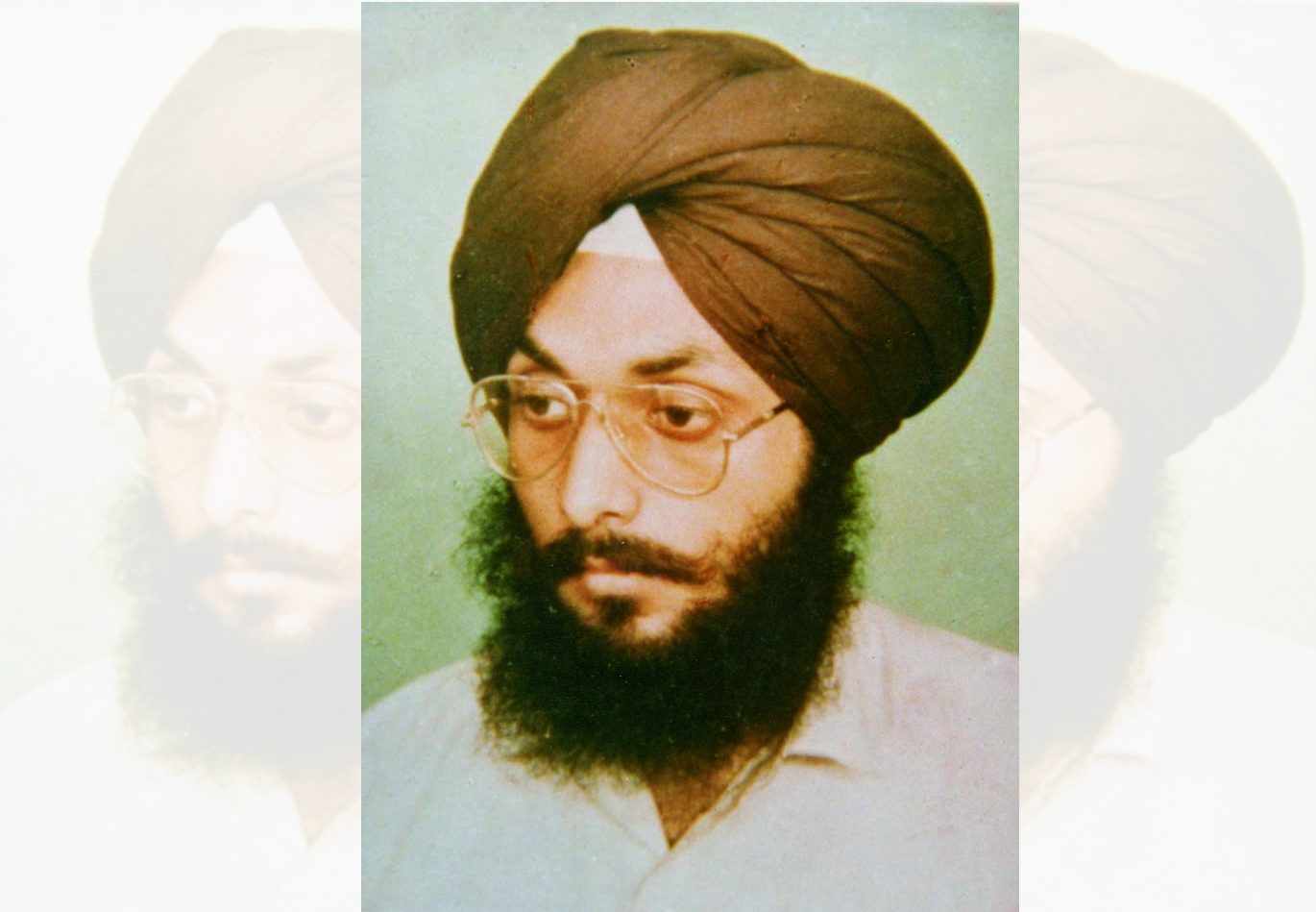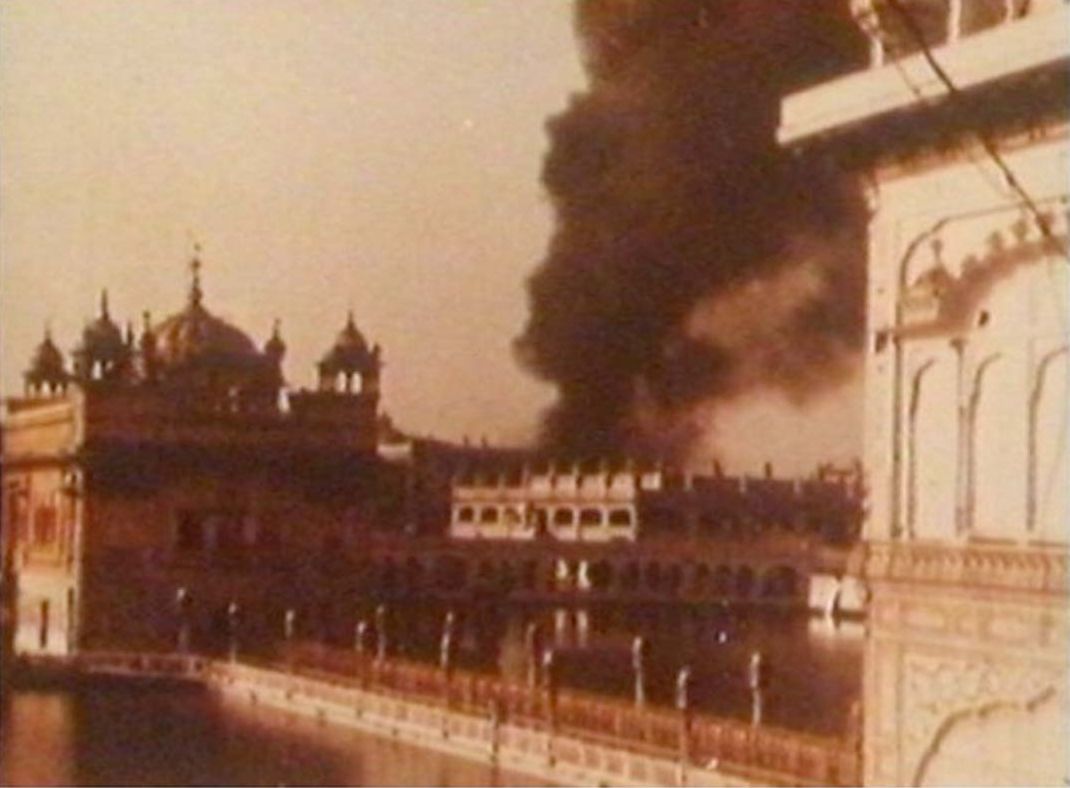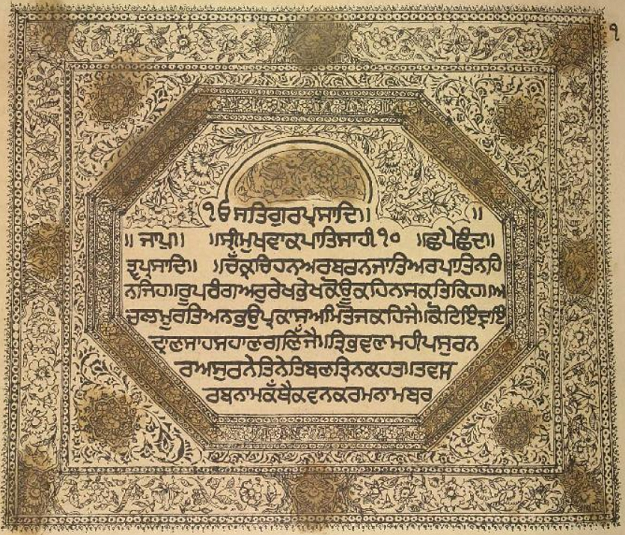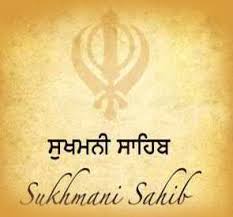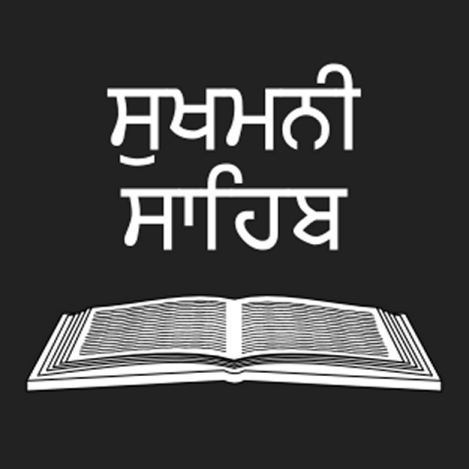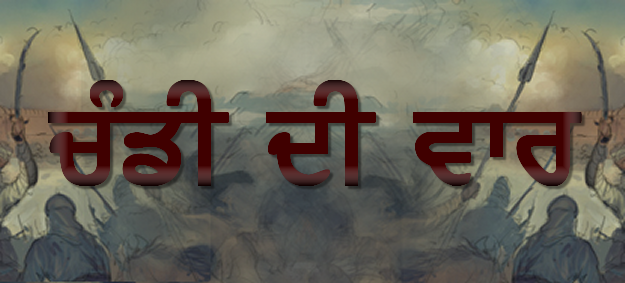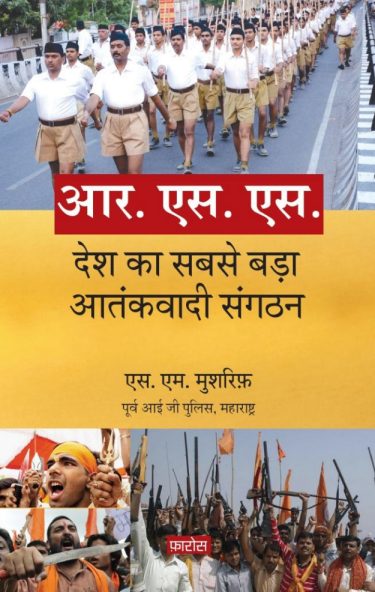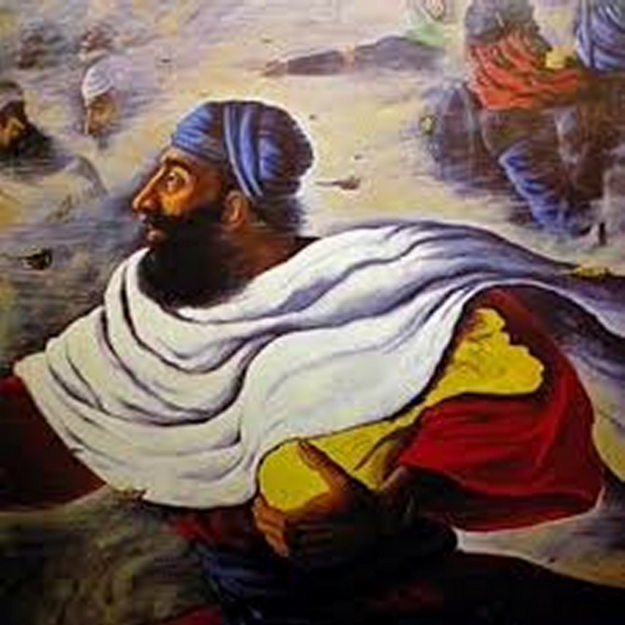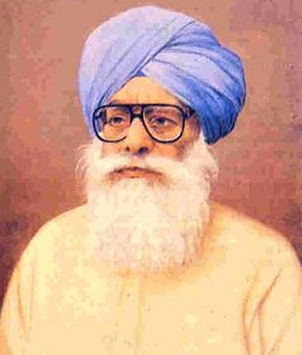
Parliamentarian and Sikh intellectual par excellence
Sirdar Kapur Singh was a Civil Servant, a parliamentarian and an intellectual par excellence. He was master of many sided learning. Besides Sikh theology, he was vastly learned in philosophy, history and literature.
He was born into a farming family, at the village Chakk in Ludhiana district on 2 March 1909. His father's name was Didar Singh. Sirdar Kapur Singh received his Master's degree, first class first, at the prestigious Government College, Lahore, after which he went to Cambridge to take his Tripos in Moral Sciences. He was a distinguished linguist and had mastered several languages of the east and the west. Besides his proficiency in English with extraordinary subtlety and fineness of expression, he had facility in Persian and Arabic as well as in Sanskrit.
In addition to these, he claimed easy acquaintance with such discrete fields as astrology, architecture and space science. In spite of his knowledge covering many disparate areas, Sirdar Kapur Singh's principal focus was on Sikh literature and theology. He was a stickler for accuracy of fact and presentation. He stood up against any misrepresentation or falsification of any shade of Sikh thought and belief. He was most vigilant and unbending in this respect.
He was selected into the Indian Civil Service and served in various administrative posts in the cadre till 1947 under the British and later under the government of independent India. He worked as deputy commissioner of Kangra, Rohtak and many other places. In the post 1947 period, he was particularly irked by the growing narrow politics of the government biased against the Sikhs. What incensed him most was a circular letter dated 10 October 1947, issued by the state governor, Chandu Lal Trivedi, warning district authorities in the Punjab against what was described as the criminal tendencies of the Sikh people. Kapur Singh filed a strong protest against this utterly criminal branding of the Sikhs. He therefore invited the government's wrath. Totally baseless charges were brought against him which led to his dismissal from the service.
Sirdar Kapur Singh became an ardent supporter of the Akali demand for a Punjabi speaking state. After a brief stint as Professor of Sikhism under the authority of the Akal Takht, he joined active politics in 1962 and was elected to the lower house of Indian Parliament and a member of the Punjab Vidhan Sabha (State legislative Assembly) in 1969. He was forthright in speech and an unrelenting critic of government's policies where they impinged on the rights of the Sikhs. As a Sikh ideologue he was the moving spirit behind the Anandpur Sahib Resolution adopted by the Shiromani Akali Dal in 1975, which like several other of his pronouncements became a crucial enunciation of modern Sikh political formula and policy.
A very stirring Sikh document of the modern period was the Presidential address given at Hari Singh Nalwa conference convened at Ludhiana. Although it was nowhere specified, all important Sikh political or intrinsically scholarly documents of this period bear the imprint of Kapur Singh's penmanship in sonorous phraseology.
The conference resolution said : "This conference in commemoration of General Hari Singh Nalwa of historical fame reminds all concerned that the Sikh people are makers of history and are conscious of their political destiny in a free India. This conference recalls that the Sikh people agreed to merge in a common Indian nationality on the explicit understanding of being accorded a constitutional status of co-sharers in the community, which solemn understanding now stands cynically repudiated by the present rulers of India. Further, the Sikh people have been systematically reduced to a sub-political status in their homeland, the Punjab, and to an insignificant position in their motherland, India. The Sikhs are in a position to establish before an impartial international tribunal, uninfluenced by the present Indian rulers, that the law, the judicial process, and the executive action of the State of India is consistently and heavily weighted against the Sikhs and is administered with unbandaged eyes against Sikh citizens. This conference, therefore, resolves, after careful thought, that there is left no alternative for the Sikhs in the interest of self-preservation but to frame their political demand for securing a self-determined political status within the Republic of Union of India. " The author's name is not mentioned here, but it is clearly the handiwork of Sirdar Kapur Singh.
Sirdar Kapur Singh, besides being an extraordinarily learned man, was a prolific writer. In addition to his Parasarprasna, in English, which ranks as a classic on Sikh philosophy, his other works include Hashish (Punjabi poems), Saptassrang (Punjabi biographies), Bahu Vistar (Punjabi essays), Pundrik (Punjabi essays on culture and religion), Mansur-al-Hallaj (monograph on a Sufi saint), Sachi Sakhi (memoirs), Sacred Writings of the Sikhs (a UNESCO publication), Me Judice (English miscellany), Sikhism for Modern Man, Contributions of Guru Nanak, The Hour of Sword, Guru Arjan and His Sukhmani.
Sirdar Kapur Singh died after a protracted illness at his village home in Jagraon in Ludhiana district on 13 August 1986.
ਸਿਰਦਾਰ ਕਪੂਰ ਸਿੰਘ ਪੰਜਾਬ, ਪੰਜਾਬੀ ਅਤੇ ਪੰਜਾਬੀਅਤ ਦਾ ਇੱਕ ਮਹਾਨ ਅਲੰਬਰਦਾਰ ਸੀ ਜਿਸ ਨੇ ਆਪਣੀਆਂ ਲਿਖਤਾਂ, ਭਾਸ਼ਣਾਂ ਅਤੇ ਕੰਮਾਂ ਦੁਆਰਾ ਪੰਜਾਬ ਅਤੇ ਸਿੱਖ ਕੌਮ ਦੀ ਸੇਵਾ ਕੀਤੀ।
ਹਿੰਦੀ, ਉਰਦੂ, ਸੰਸਕ੍ਰਿਤ, ਅਰਬੀ, ਅੰਗਰੇਜ਼ੀ ਅਤੇ ਹੋਰ ਕਈ ਦੇਸੀ-ਵਿਦੇਸ਼ੀ ਭਾਸ਼ਾਵਾਂ ਦੇ ਮਾਹਰ ਹੋਣ ਦੇ ਬਾਵਜੂਦ ਉਨ੍ਹਾਂ ਆਪਣੀਆਂ ਵਧੇਰੇ ਪੁਸਤਕਾਂ ਪੰਜਾਬੀ ਵਿੱਚ ਲਿਖ ਕੇ ਪੰਜਾਬੀ ਸਾਹਿਤ ਅਤੇ ਚਿੰਤਨ ਨੂੰ ਅਮੀਰ ਕੀਤਾ। ਪੰਜਾਬੀ ਮਾਂ ਦੇ ਇਸ ਸਪੂਤ ਦਾ ਜਨਮ 2 ਮਾਰਚ, 1909 ਨੂੰ ਲੁਧਿਆਣੇ ਦੇ ਪਿੰਡ ਚੱਕ ਵਿਖੇ ਪਿਤਾ ਦੀਦਾਰ ਸਿੰਘ ਦੇ ਘਰ ਵਿੱਚ ਹੋਇਆ। ਬਚਪਨ ਤੋਂ ਹੀ ਉਨ੍ਹਾਂ ਨੂੰ ਪੜ੍ਹਾਈ, ਸਾਹਿਤ ਅਤੇ ਕੌਮੀ-ਕੌਮਾਂਤਰੀ ਪੱਧਰ ਦੀਆਂ ਘਟਨਾਵਾਂ ਵਿੱਚ ਦਿਲਚਸਪੀ ਸੀ। ਦਸਵੀਂ ਕਰਨ ਉਪਰੰਤ ਉਨ੍ਹਾਂ ਗਰੈਜੂਏਸ਼ਨ ਵਿੱਚ ਦਾਖ਼ਲਾ ਲਿਆ। ਫਿਰ ਸਰਕਾਰੀ ਕਾਲਜ ਲਾਹੌਰ ਤੋਂ ਪਹਿਲੇ ਦਰਜੇ ਵਿੱਚ ਐਮ.ਏ. ਪਾਸ ਕੀਤੀ ਤੇ ਇਸ ਤੋਂ ਬਾਅਦ ਨੈਤਿਕ ਵਿਗਿਆਨ/ਸਿੱਖਿਆ ਵਿੱਚ ਅਗਲੇਰੀ ਪੜ੍ਹਾਈ ‘ਟ੍ਰਾਈਪੋਸ’ ਲਈ ਉਹ ਕੈਂਬ੍ਰਿਜ ਯੂਨੀਵਰਸਿਟੀ ਚਲੇ ਗਏ।
ਪੜ੍ਹਾਈ ਪੂਰੀ ਕਰਨ ਉਪਰੰਤ ਸਿਰਦਾਰ ਕਪੂਰ ਸਿੰਘ ਭਾਰਤ ਵਾਪਸ ਆ ਗਏ। ਉਨ੍ਹਾਂ ਇੱਥੇ ਆਈ.ਸੀ.ਐਸ. ਦੀ ਪ੍ਰੀਖਿਆ ਪਾਸ ਕੀਤੀ ਅਤੇ ਇੱਕ ਅਫ਼ਸਰ ਚੁਣੇ ਗਏ। ਇਸ ਤੋਂ ਬਾਅਦ ਉਨ੍ਹਾਂ ਆਹਲਾ ਦਰਜੇ ਦੇ ਪ੍ਰਸ਼ਾਸਨਿਕ ਅਹੁਦਿਆਂ ‘ਤੇ ਕੰਮ ਕੀਤਾ। ਉੱਚ ਸਰਕਾਰੀ ਸੇਵਾ ਵਿੱਚ ਹੁੰਦਿਆਂ ਉਨ੍ਹਾਂ ਕੌਮੀ ਸਰਕਾਰ ਦੀ ਸਿੱਖਾਂ ਪ੍ਰਤੀ ਪੱਖਪਾਤੀ ਨੀਤੀ ਦਾ ਨਜ਼ਦੀਕੀ ਅਧਿਐਨ ਅਤੇ ਅਨੁਭਵ ਹਾਸਲ ਕੀਤਾ। ਉਨ੍ਹਾਂ ਨੂੰ ਸਿੱਖਾਂ ਪ੍ਰਤੀ ਭਾਰਤ ਸਰਕਾਰ ਦੀ ਸੌੜੀ ਮਾਨਸਿਕਤਾ ਦਾ ਪਤਾ ਰਾਜਪਾਲ ਦੇ 10 ਅਕਤੂਬਰ, 1947 ਦੇ ਸਰਕੂਲਰ ਪੱਤਰ ਤੋਂ ਹੋ ਗਿਆ। ਰਾਜਪਾਲ ਚੰਦੂ ਲਾਲ ਤ੍ਰਿਵੇਦੀ ਨੇ ਜ਼ਿਲ੍ਹਾ ਅਧਿਕਾਰੀਆਂ ਨੂੰ ਸਿੱਖ ਲੋਕਾਂ ਦੇ ਜਰਾਇਮ ਰੁਝਾਨ ਪ੍ਰਤੀ ਖ਼ਬਰਦਾਰ ਕੀਤਾ ਸੀ।
ਸਿਰਦਾਰ ਕਪੂਰ ਸਿੰਘ ਨੇ ਤ੍ਰਿਵੇਦੀ ਦੇ ਘ੍ਰਿਣਾਪੂਰਕ ਦੋਸ਼ ਵਿਰੁੱਧ ਸਖ਼ਤ ਰੋਸ ਜ਼ਾਹਰ ਕੀਤਾ। ਰਾਜਪਾਲ ਨੇ ਸਿਰਦਾਰ ਕਪੂਰ ਸਿੰਘ ਦੇ ਰੋਸ ਨੂੰ ਨਿੱਜੀ ਹਮਲਾ ਸਮਝ ਕੇ ਉਨ੍ਹਾਂ ਵਿਰੁੱਧ ਕਈ ਦੋਸ਼ ਲਗਾ ਦਿੱਤੇ ਅਤੇ ਉਨ੍ਹਾਂ ਨੂੰ ਨੌਕਰੀ ਤੋਂ ਕੱਢ ਦਿੱਤਾ ਪਰ ਸਿਰਦਾਰ ਕਪੂਰ ਸਿੰਘ ਨੇ ਇਸ ਖ਼ਿਲਾਫ਼ ਲੰਮੀ ਸਿਧਾਂਤਕ ਅਤੇ ਕਾਨੂੰਨੀ ਲੜਾਈ ਲੜੀ। ਸਿੱਖ ਕੌਮ ਪ੍ਰਤੀ ਹੋਣ ਵਾਲੇ ਵਿਤਕਰੇ ਤੋਂ ਦੁਖੀ ਹੋ ਕੇ ਸਿੱਖ ਬੁੱਧੀਜੀਵੀ ਸਿਰਦਾਰ ਕਪੂਰ ਸਿੰਘ ਨੇ ਸਰਗਰਮ ਰਾਜਨੀਤੀ ਵਿੱਚ ਆਉਣ ਦਾ ਮਨ ਬਣਾ ਲਿਆ। ਪੰਜਾਬੀ ਬੋਲਣ ਵਾਲੇ ਇਲਾਕੇ ਦੀ ਅਕਾਲੀ ਮੰਗ ਦੇ ਕੱਟੜ ਸਮਰਥਕ ਵਜੋਂ ਜਾਣੇ ਜਾਂਦੇ ਸਿਰਦਾਰ ਕਪੂਰ ਸਿੰਘ ਨੇ ਅਕਾਲ ਤਖ਼ਤ ਦੇ ਅਧਿਕਾਰ ਖ਼ੇਤਰ ਅਧੀਨ ਪ੍ਰੋਫੈਸਰ ਆਫ਼ ਸਿੱਖਇਜ਼ਮ ਵਜੋਂ ਸੇਵਾ ਨਿਭਾਉਣ ਬਾਅਦ ਰਾਜਨੀਤੀ ਵਿੱਚ ਪ੍ਰਵੇਸ਼ ਕੀਤਾ ਅਤੇ 1962 ਵਿੱਚ ਉਹ ਲੋਕ ਸਭਾ ਦੇ ਮੈਂਬਰ ਬਣੇ। ਸੰਨ 1969 ਵਿੱਚ ਉਹ ਪੰਜਾਬ ਵਿਧਾਨ ਸਭਾ ਦੇ ਮੈਂਬਰ ਬਣੇ। 6 ਸਤੰਬਰ, 1966 ਨੂੰ ਉਨ੍ਹਾਂ ਵੱਲੋਂ ਭਾਰਤੀ ਸੰਸਦ ਵਿੱਚ ਦਿੱਤਾ ਭਾਸ਼ਣ ‘ਸਿੱਖਾਂ ਨਾਲ ਧੋਖਾ’ ਇੱਕ ਯਾਦਗਾਰੀ ਭਾਸ਼ਣ ਸੀ।
ਉਨ੍ਹਾਂ ਸਾਚੀ ਸਾਖੀ, ਸਪਤ ਸ੍ਰਿੰਗ, ਪੁੰਦੀ੍ਰਕ, ਹਸ਼ੀਸ਼ ‘ਕਾਵਿ-ਸੰਗ੍ਰਹਿ’, ਬਾਕੂ ਵਿਸਲਾਰ (ਪੰਜਾਬੀ ਲੇਖ) ਅਤੇ ਮਨਸੂਰ ਅਲ-ਹਲਾਜ਼ ਪੁਸਤਕਾਂ ਦੀ ਰਚਨਾ ਕਰਨ ਦੇ ਨਾਲ ਯੂਨੈਸਕੋ ਲਈ ‘ਸਿੱਖਾਂ ਦੀਆਂ ਪਵਿੱਤਰ ਲਿਖਤਾਂ’ (ਅੰਗਰੇਜ਼ੀ ਵਿੱਚ) ਦੀ ਰਚਨਾ ਕੀਤੀ। ਸਿਰਦਾਰ ਕਪੂਰ ਸਿੰਘ ਬਹੁਪੱਖੀ ਪ੍ਰਤਿਭਾ ਦੇ ਮਾਲਕ ਸਨ। ਸਿਰਦਾਰ ਕਪੂਰ ਸਿੰਘ ਦੀ ਮੁੱਖ ਪਛਾਣ ਆਨੰਦਪੁਰ ਸਾਹਿਬ ਮਤੇ ਕਰਕੇ ਹੈ। ਸੰਨ 1973 ਵਿੱਚ ਸ਼੍ਰੋਮਣੀ ਅਕਾਲੀ ਦਲ ਨੇ ਜਿਸ ਆਨੰਦਪੁਰ ਸਾਹਿਬ ਦੇ ਮਤੇ ਨੂੰ ਅਪਣਾਇਆ ਸੀ, ਉਸ ਵਿੱਚ ਸਿਰਦਾਰ ਕਪੂਰ ਸਿੰਘ ਦੀ ਸੋਚ ਦਾ ਮੁੱਖ ਯੋਗਦਾਨ ਸੀ। ਇਸ ਮਤੇ ਦੀਆਂ ਤਜਵੀਜ਼ਾਂ ਮੌਜੂਦਾ ਸਿੱਖ ਰਾਜਨੀਤਕ ਸਿਧਾਂਤ ਅਤੇ ਨੀਤੀ ਦਾ ਪ੍ਰੇਰਨਾ ਸਰੋਤ ਬਣੀਆਂ।
13 ਅਗਸਤ, 1986 ਨੂੰ ਸਿਰਦਾਰ ਕਪੂਰ ਸਿੰਘ ਲੰਮੀ ਬੀਮਾਰੀ ਤੋਂ ਬਾਅਦ, 77 ਸਾਲ ਦੀ ਉਮਰ ਵਿੱਚ ਜਗਰਾਉਂ ਵਿੱਚ ਆਪਣੇ ਗ੍ਰਹਿ ਵਿਖੇ ਅਕਾਲ ਚਲਾਣਾ ਕਰ ਗਏ ਪਰ ਆਪਣੇ ਪਿੱਛੇ ਅਥਾਹ ਯਾਦਾਂ, ਲਿਖਤਾਂ ਅਤੇ ਸੁਨੇਹੇ ਛੱਡ ਗਏ।


